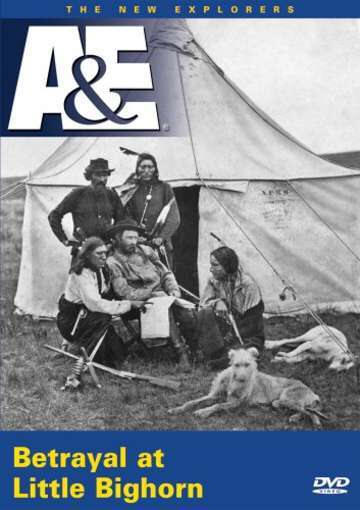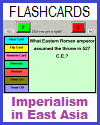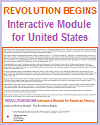| www.studenthandouts.com > U.S. History > Growth and Transformation > Books and Films |
 Length: 46 minutes
Length: 46 minutesAge appropriateness: A&E's "New Explorers: Betrayal at Little Bighorn" is not officially rated in the United States. It is safe viewing for all ages. The content is most appropriate for students in seventh grade on up who are studying the Indian Wars in U.S. history. Creators and stars: Bill Kurtis, David Huizenga, Dr. Terry Flower, Ed Zimmerman, Gary L. Foreman, Gayle Gilman, Glenn Robertson, Greg Patteson, James Ewing, Mark Augustine, Medicine Tail Coulee, Michael Cascio, Michael Terry, Paul Hutton, Rick Snyder, Robert Nightengale, Seamus Gallagher, Steve Alexander, Tom L. Small Accuracy: "Betrayal at Little Bighorn" is an equal mix of the historical record and amateur experimental armchair history and archaeology. Unfortunately, this documentary does not always distinguish between the two, nor does it always properly identify its interview subjects (or list their credentials). Review: "The New Explorers: Betrayal at Little Bighorn" will be of interest to students (and adults) who enjoy military history, reenactments, and revisionist theories. This program does not explore the Battle of the Little Bighorn so much as it examines the actions of Capt. Benteen, Capt. Weir, and Maj. Marcus Reno to determine if they were guilty of dereliction of duty, and if so, did the battle necessarily have to have been Custer's last stand. These theories were popularized in Robert Nightengale's 1996 book Little Bighorn. (On a side note, Robert Nightengale has had some legal entanglements over the past decade.) They are just theories, though, and this video provides little of value regarding the nature, causes, or effects of the battle. And even the theories are flawed and incomplete. For example, there is no mention of wind patterns, weather conditions, or either side's familiarity with the terrain, not to mention the different weaponry of the Plains Indians and U.S. Cavalry. I was especially appalled at the gunfire tests, wherein the team attempted to ascertain whether or not Reno could have heard the battle. Keeping perfectly still and quiet, the team was able to hear shots fired in the distance. However, Reno was encamped with hundreds of soldiers and animals. Regardless of whether or not the research team could hear shots in the distance, this has no bearing on anyone in Reno's noisy camp being able to hear distant gunfire. "Betrayal at Little Bighorn" does next to nothing to explain why Custer attacked the Native Americans in the first place, nor explain why the Indians were so well able to defend themselves. If you have time to show only one video in class to illustrate the Indian Wars and their significance in American history, there are much better options available than "Betrayed at Little Bighorn." |
|
Review and discussion questions: (1) Summarize Major Marcus Reno's account of his actions at the Little Bighorn. (2) How did the report of Reno differ from the reports of his men? (3) List some of the mistakes made by the U.S. military that contributed to Custer's defeat. (4) How do the actions of Captain Thomas Weir following the battle make him appear guilty of dereliction of duty? (5) Has this documentary convinced you that Custer might have survived the battle had he received assistance? Why or why not? (6) When did these events take place? (7) On a map, locate the site of the Battle of the Little Bighorn. Vocabulary terms and names: battlefield, Captain Frederick Benteen, Captain Thomas Weir, cavalry, centennial, Court of Inquiry, dereliction of duty, experimental archaeology, General George Armstrong Custer, Indian Wars, Little Bighorn, Major Marcus Reno, manifest destiny, Montana, Plains Indians, reenactment, Sioux, Sitting Bull, U.S. Seventh Cavalry, warrior |
 |
|---|
| www.studenthandouts.com > U.S. History > Growth and Transformation > Books and Films |
"The New Explorers: Betrayal at Little Bighorn" Video/DVD Review Publication Date for Citation Purposes: July 8, 2012 |











